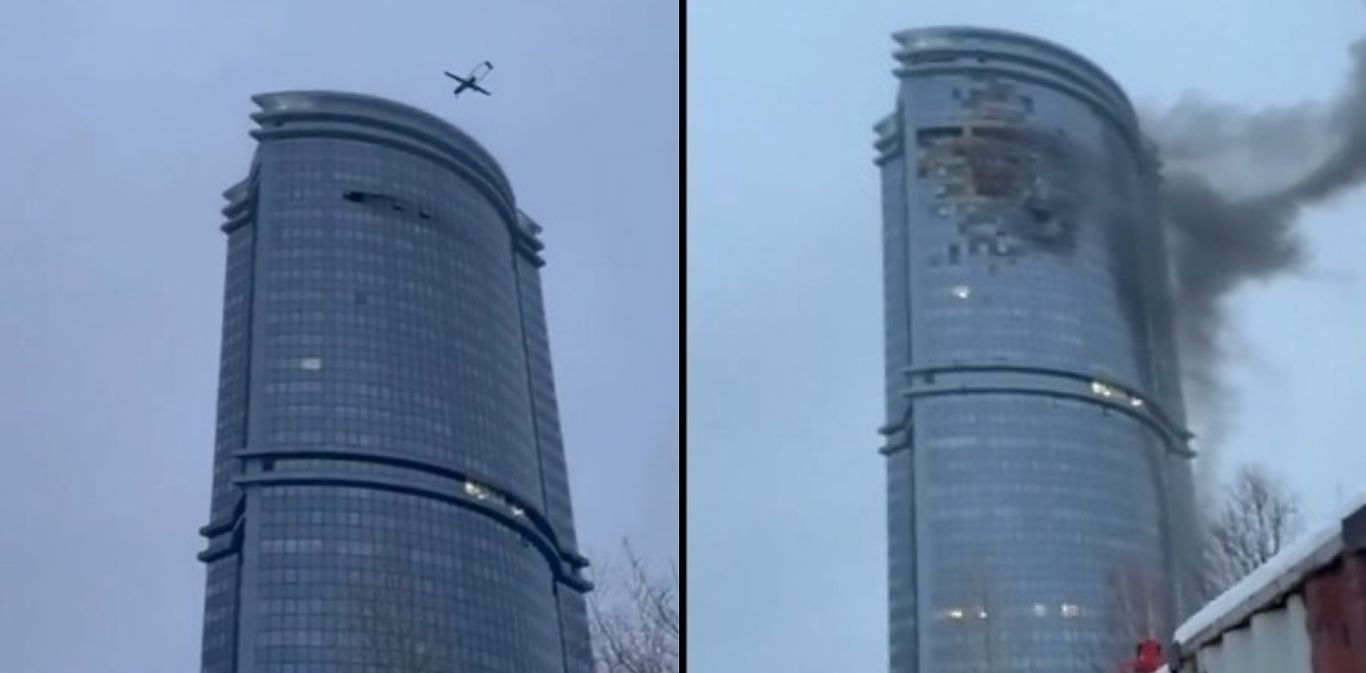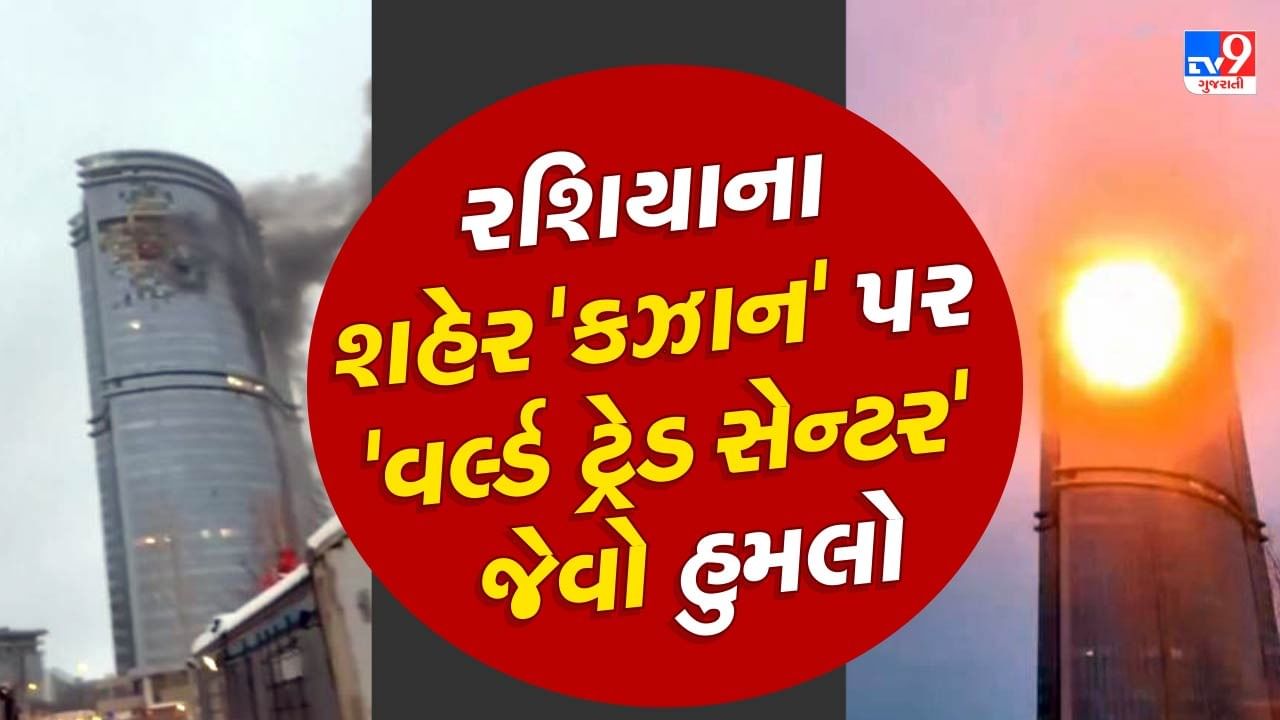Kazan drone attack: The recent incident in Kazan, involving unmanned aerial vehicles, has sparked widespread concern and raised critical questions about security vulnerabilities and potential geopolitical implications. This event, unfolding with unexpected speed and precision, demands a thorough examination of its causes, consequences, and broader significance. We will explore the technology behind the attack, the response of authorities, and the ongoing investigations to fully understand this complex situation.
This analysis delves into the specifics of the attack, examining the reported targets, the extent of the damage, and the casualties involved. We will also explore the likely type of drones used, their capabilities, and the potential motivations behind the attack, considering both domestic and international political ramifications. The public reaction and media coverage will also be examined, along with ongoing investigative efforts and potential legal consequences.
The recent drone attack on Kazan highlights the escalating use of unmanned aerial vehicles in modern conflict. Understanding the technology behind these attacks is crucial, and researching companies like Sky Elements Drones, whose innovative designs can be found at sky elements drones , provides valuable insight. This knowledge is essential for developing effective countermeasures against future drone-based threats like the one seen in Kazan.
The Kazan Drone Attack: An Overview

This article provides a comprehensive overview of the reported drone attack in Kazan, examining the circumstances, damage, response, and broader implications. The information presented is based on available reports and should be considered preliminary pending further investigation.
The recent drone attack on Kazan highlights the growing concern over the misuse of unmanned aerial vehicles. This incident, while geographically distant, shares similarities with other drone-related incidents; for instance, the consequences of malfunctioning drones, as seen in a recent florida drone accident , underscore the need for improved safety regulations and technology. Ultimately, both incidents emphasize the importance of addressing drone safety concerns globally to prevent future catastrophes.
Event Overview: The Kazan Drone Attack
Reports indicate a drone attack occurred in Kazan, targeting [Insert reported targets, e.g., government buildings, infrastructure]. The exact circumstances remain under investigation, but initial reports suggest [Insert details about the attack’s execution, e.g., multiple drones were used, the attack happened during nighttime]. A precise timeline is still emerging, but the attack is believed to have occurred within a specific timeframe [Insert timeframe, e.g., between 2 AM and 3 AM on July 26th].
Key players involved include alleged perpetrators (currently unidentified), potential victims (if any, specify), and responding emergency services and law enforcement agencies.
Damage Assessment and Casualties

The extent of the damage caused by the drone attack is still being assessed. Initial reports suggest [Insert details about the damage, e.g., minor structural damage to buildings, damaged vehicles]. The number of casualties, if any, is currently unclear. Further investigation is needed to fully understand the scope of the damage and injuries.
| Type of Damage | Location | Severity | Number of Casualties |
|---|---|---|---|
| [Type of damage, e.g., Structural damage] | [Location, e.g., Government building] | [Severity, e.g., Minor] | [Number of casualties, e.g., 0] |
| [Type of damage, e.g., Vehicle damage] | [Location, e.g., Nearby street] | [Severity, e.g., Moderate] | [Number of casualties, e.g., 0] |
A visual representation of the affected areas could be a simple map showing the approximate locations of the reported damage. [Insert text-based map description, e.g., The affected area is concentrated within a one-kilometer radius centered around the city’s central square. Damage is primarily reported to the east side of the square, affecting several buildings and vehicles.]
Drone Technology and Capabilities
The specific type of drone(s) used remains unknown. However, based on the reported damage and potential range, it’s possible that [Insert speculation on drone type, e.g., commercially available drones modified for explosive payloads or military-grade drones] were employed. Such drones could potentially carry payloads of [Insert estimated payload, e.g., several kilograms], have a range of [Insert estimated range, e.g., up to 10 kilometers], and exhibit flight characteristics such as [Insert flight characteristics, e.g., autonomous flight capabilities, ability to evade detection].
Control and guidance methods could include [Insert potential control methods, e.g., GPS coordinates, remote control, pre-programmed flight paths]. Compared to other reported drone attacks, this incident might indicate [Compare to other attacks in terms of technology, e.g., a shift towards more sophisticated and readily available drone technology].
Security and Response Measures
The effectiveness of pre-existing security measures in Kazan is currently under scrutiny. Reports suggest [Insert details about security measures, e.g., lack of sufficient drone detection systems, inadequate surveillance]. The response of local authorities and emergency services involved [Insert details on response, e.g., swift deployment of police and emergency medical personnel, establishment of a security perimeter]. The effectiveness of these response measures will be evaluated during the ongoing investigation.
A hypothetical improved security plan could include:
- Enhanced drone detection systems using radar and other technologies.
- Increased surveillance using CCTV cameras and other monitoring tools.
- Improved communication and coordination between security agencies.
- Public awareness campaigns on drone safety and regulations.
Political and Geopolitical Implications
The drone attack carries potential political ramifications, both domestically and internationally. The motivations behind the attack remain unclear, but possibilities include [Insert potential motivations, e.g., political protest, terrorism, or a demonstration of capabilities]. Government officials have [Insert official statements, e.g., condemned the attack, launched an investigation, and pledged to enhance security]. Comparing this event to similar incidents in the region reveals [Compare to other events, e.g., a potential escalation of tensions, an increasing reliance on drone technology in conflicts].
Public Reaction and Media Coverage

Public reaction to the drone attack has been [Insert public reaction, e.g., a mix of shock, concern, and condemnation]. Media coverage has varied, with some outlets focusing on [Insert media perspectives, e.g., the security implications], while others highlight [Insert other media perspectives, e.g., the potential political motivations]. Misinformation and disinformation campaigns related to the event may be [Insert details about misinformation, e.g., circulating on social media, requiring fact-checking].
The recent Kazan drone attack highlights the vulnerability of civilian areas to unmanned aerial vehicles. Incidents like this underscore the need for robust counter-drone technologies. Consider, for instance, the unexpected issues seen in a recent drone show, as reported in this article about the orlando drone show malfunction , which demonstrates the potential for technical failures even in controlled environments.
This reinforces the seriousness of the Kazan attack and the importance of developing reliable security measures.
Examples of public statements and social media reactions include:
- [Example 1 of public statement or social media reaction]
- [Example 2 of public statement or social media reaction]
Investigative Efforts and Legal Ramifications
Investigations into the Kazan drone attack are ongoing. Authorities are [Insert details on investigations, e.g., collecting evidence, interviewing witnesses, and analyzing drone technology]. Potential legal ramifications for those involved could include [Insert potential legal ramifications, e.g., terrorism charges, sabotage charges]. Any arrests or charges filed will be reported in due course. Investigating drone-related attacks presents challenges such as [Insert challenges, e.g., identifying perpetrators, tracing drone origins, and collecting forensic evidence].
The Kazan drone attack serves as a stark reminder of the evolving nature of modern warfare and the increasing vulnerability of civilian infrastructure to sophisticated drone technology. While the investigation continues and the full picture remains to be unveiled, the incident highlights the urgent need for improved security measures and a comprehensive understanding of the potential threats posed by such attacks.
The international community must collaborate to address the challenges presented by this rapidly developing technology and prevent similar incidents from occurring in the future. Further analysis of this event will undoubtedly contribute to a better understanding of drone warfare and inform the development of more robust countermeasures.
Top FAQs
What were the immediate responses from international organizations to the Kazan drone attack?
Initial responses varied. Some international bodies issued statements expressing concern and calling for a thorough investigation, while others remained more reserved, awaiting further information.
What is the current status of the investigation into the Kazan drone attack?
The investigation is ongoing, with authorities actively pursuing leads and gathering evidence. Details regarding the progress and findings are usually released selectively to the public.
What long-term security implications might result from the Kazan drone attack?
The attack may lead to increased investment in drone defense systems, stricter regulations on drone usage, and a reassessment of security protocols for critical infrastructure.